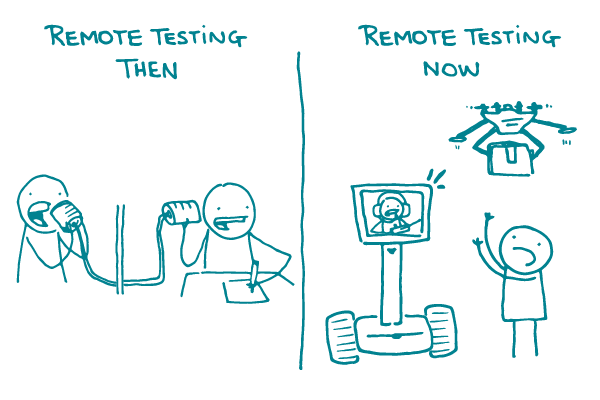
Today, we’re digging a little deeper into a topic near and dear to our ❤︎s: user testing! Diehard We ❤︎ Health Literacy fans have read our tips and musings on user testing techniques like focus groups, usability testing, and tree testing. One question we get a lot is: “Where do I actually do the testing?”
Never fear, dear readers, you have options! You can do user testing either in person or remotely. Here are pros and cons of both options.
In-person testing
You can do in-person testing any number of places, from a fancy observation lab to a public library or community center. Choose a space that’s comfortable and conducive to a friendly chat.
Pros:
- It’s easier to build rapport with people when you’re face to face.
- You can see participants’ body language and facial expressions, which can be telling — especially for sensitive topics.
- It’s easier to do certain activities, like collaging, in person.
Cons:
- Renting out a research facility can be expensive, especially if you need an observation room.
- Traveling to the testing location may be a barrier for some participants.
Remote testing
There are lots of free or inexpensive tools available to help you do user testing from anywhere. For example, you can conduct interviews over the phone or lead focus groups via video chat.
Pros:
- It’s generally less expensive than renting a facility.
- Some participants, like busy professionals, may find it logistically easier to volunteer for remote testing.
- For testing methods where you need a larger number of participants to get valid results, like card sorting, remote testing can be more convenient.
- It’s easier to get geographic diversity in your mix of participants.
Cons:
- Using technology can be a barrier for some folks, including those who are likely to struggle with health literacy.
- You’ll miss out on participants’ body language and non-verbal cues.
- There’s always the risk of a technical glitch or outage.
The bottom line: When it comes to user testing, both in-person and remote testing have pros and cons. Pick the approach that’s best for your project!
Browse recent posts